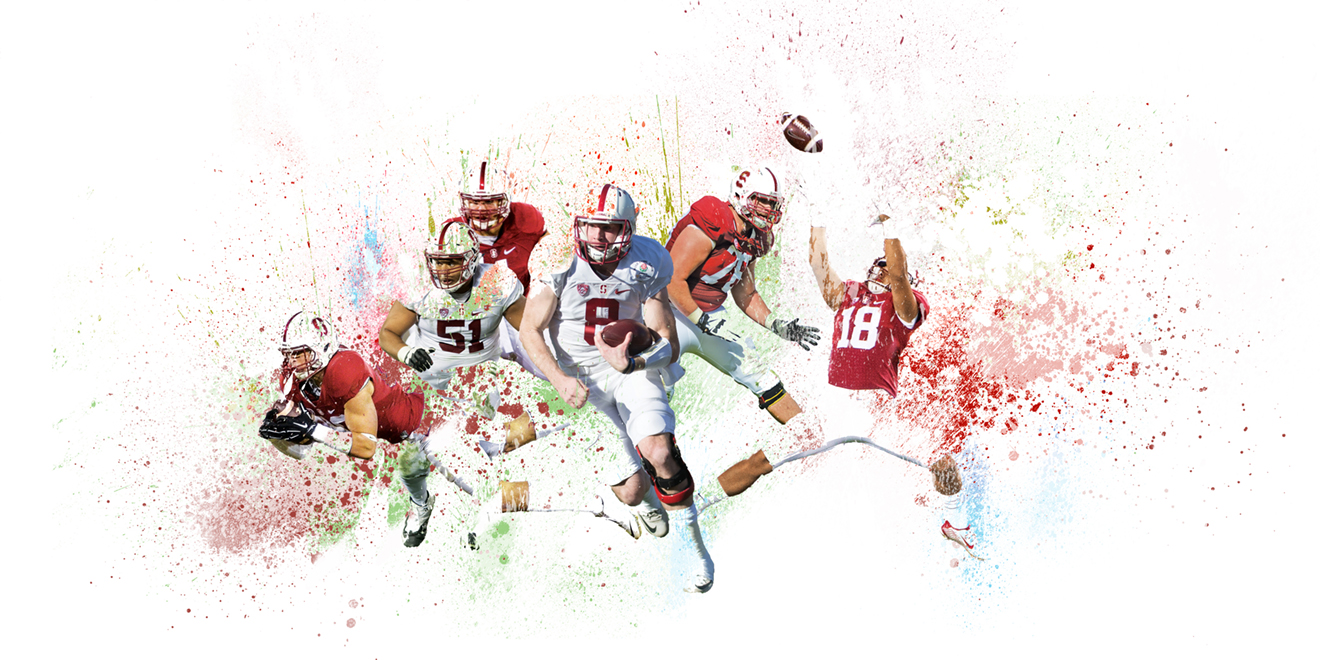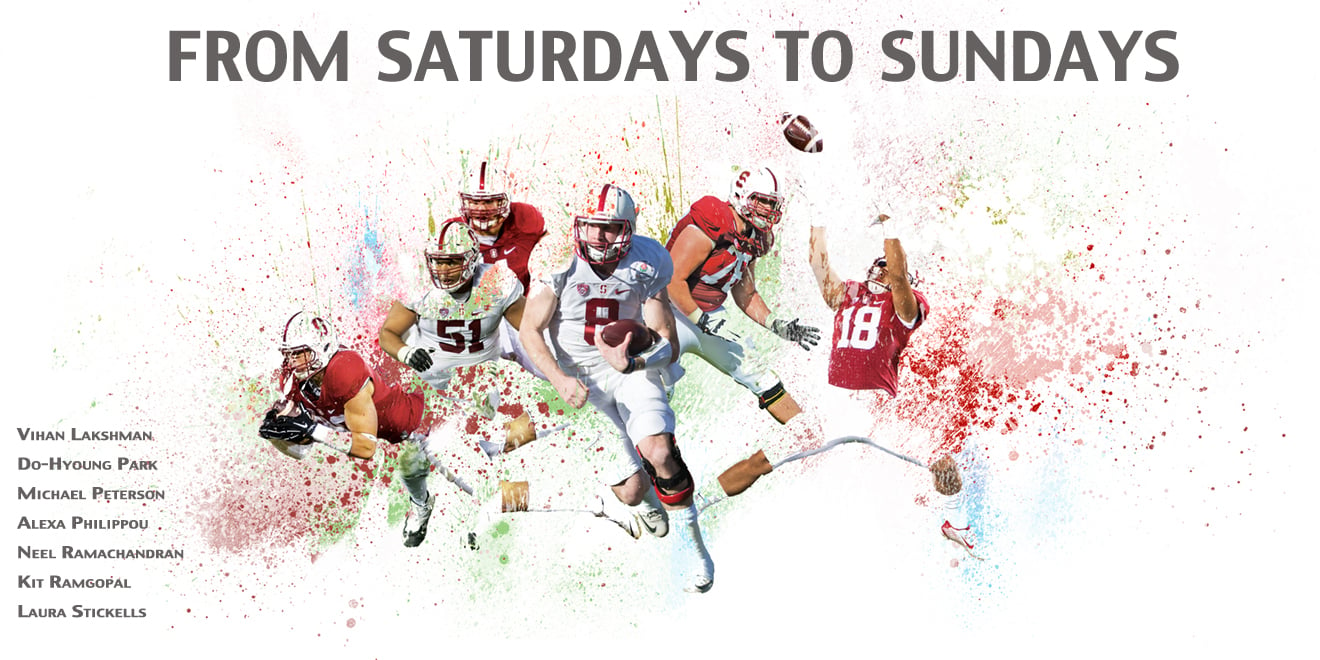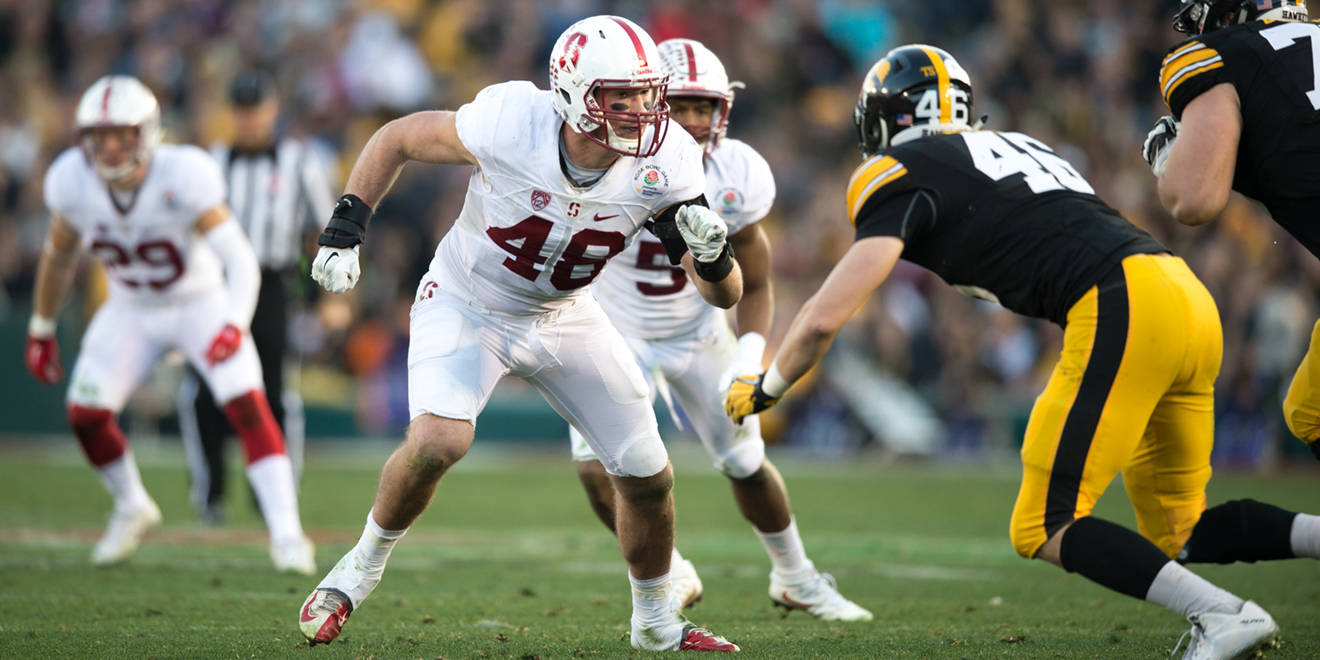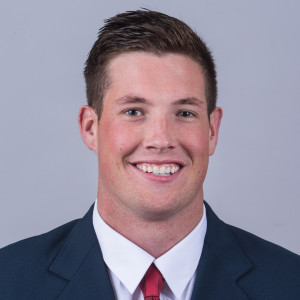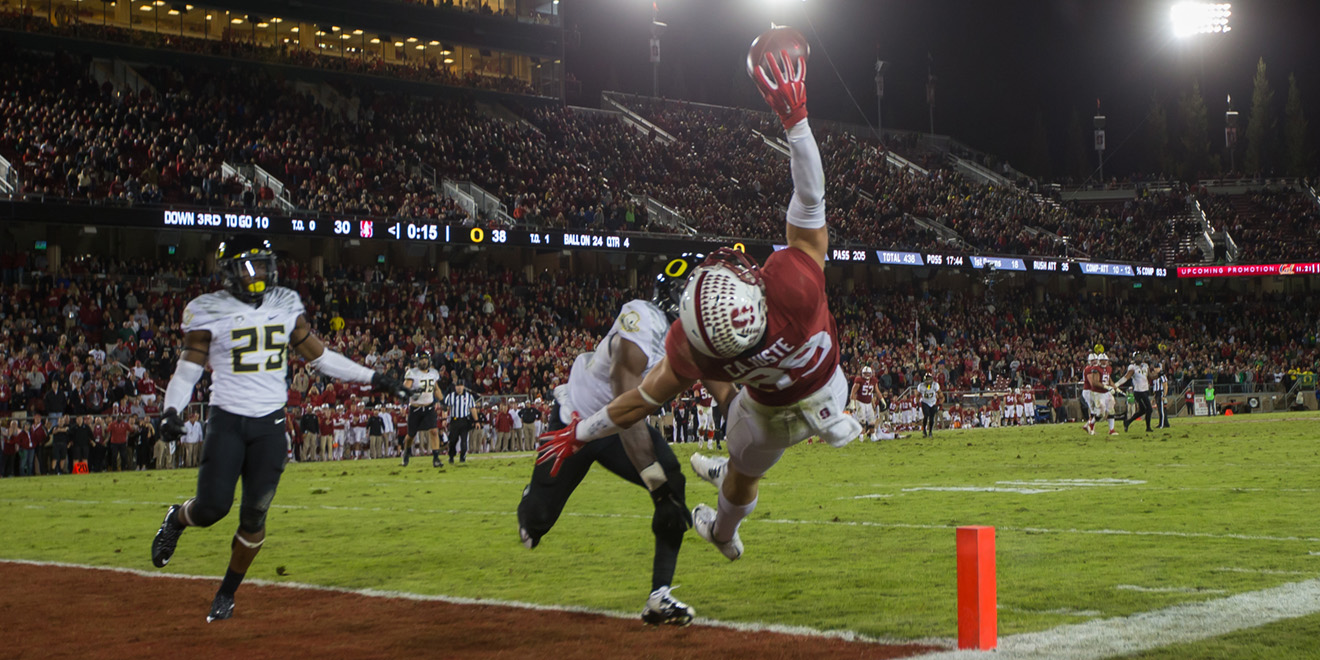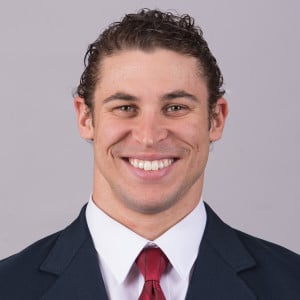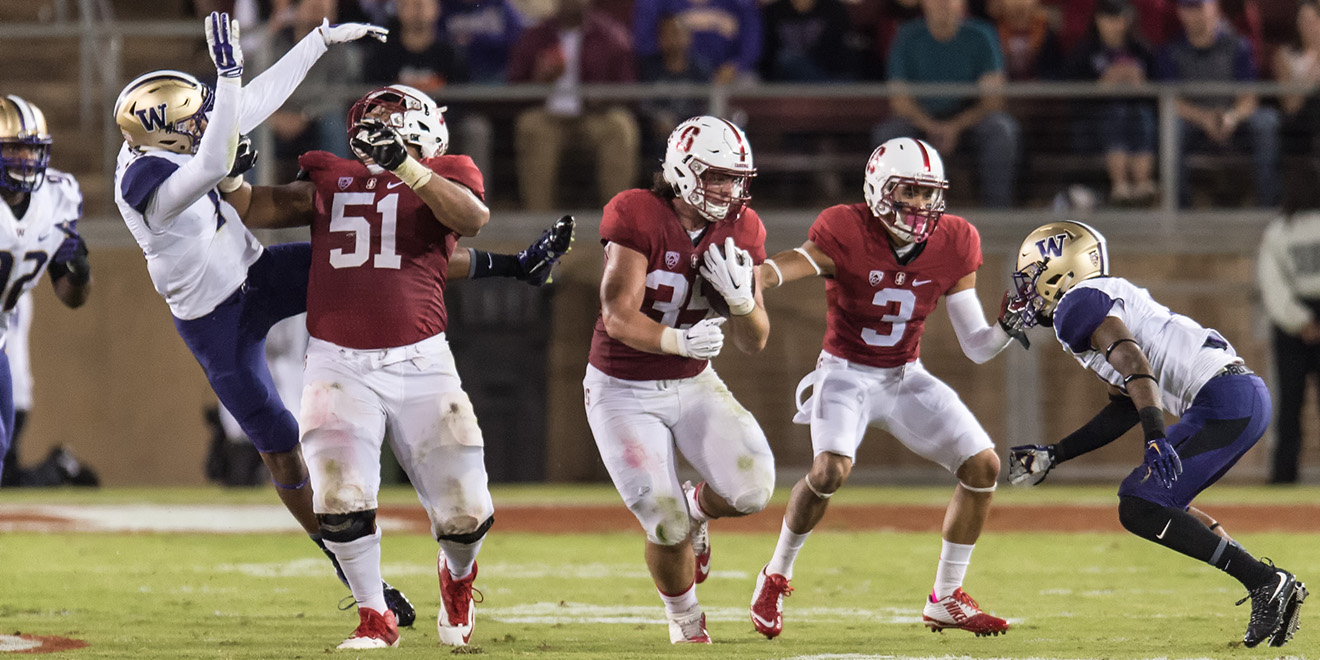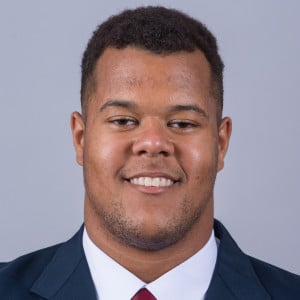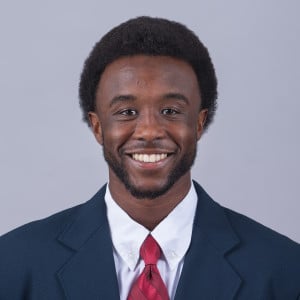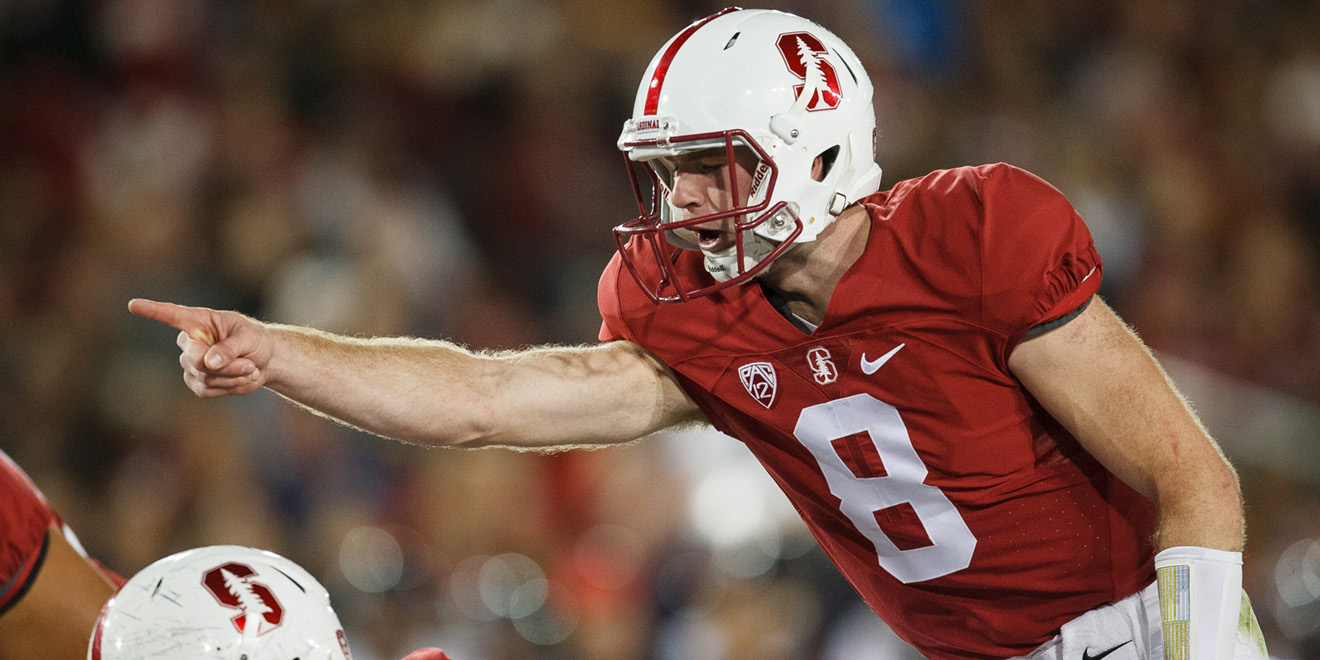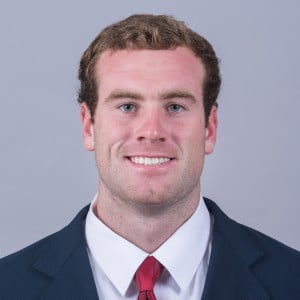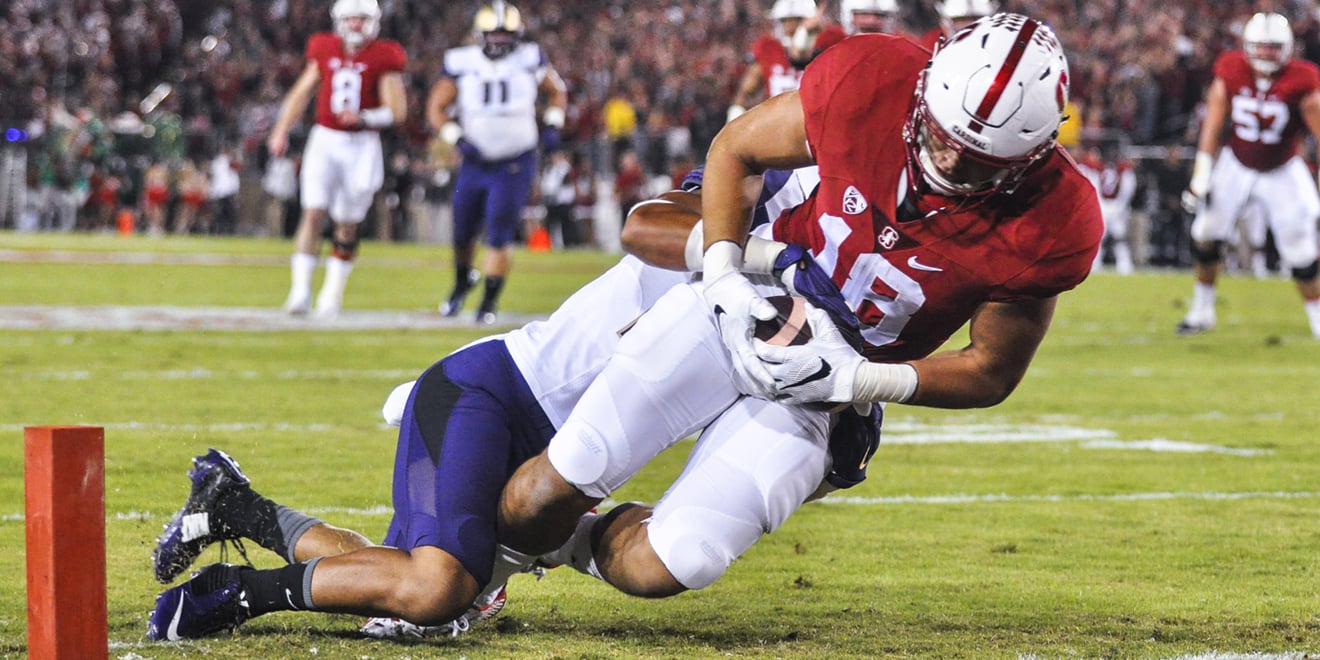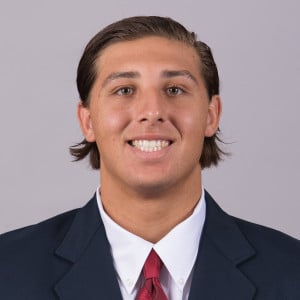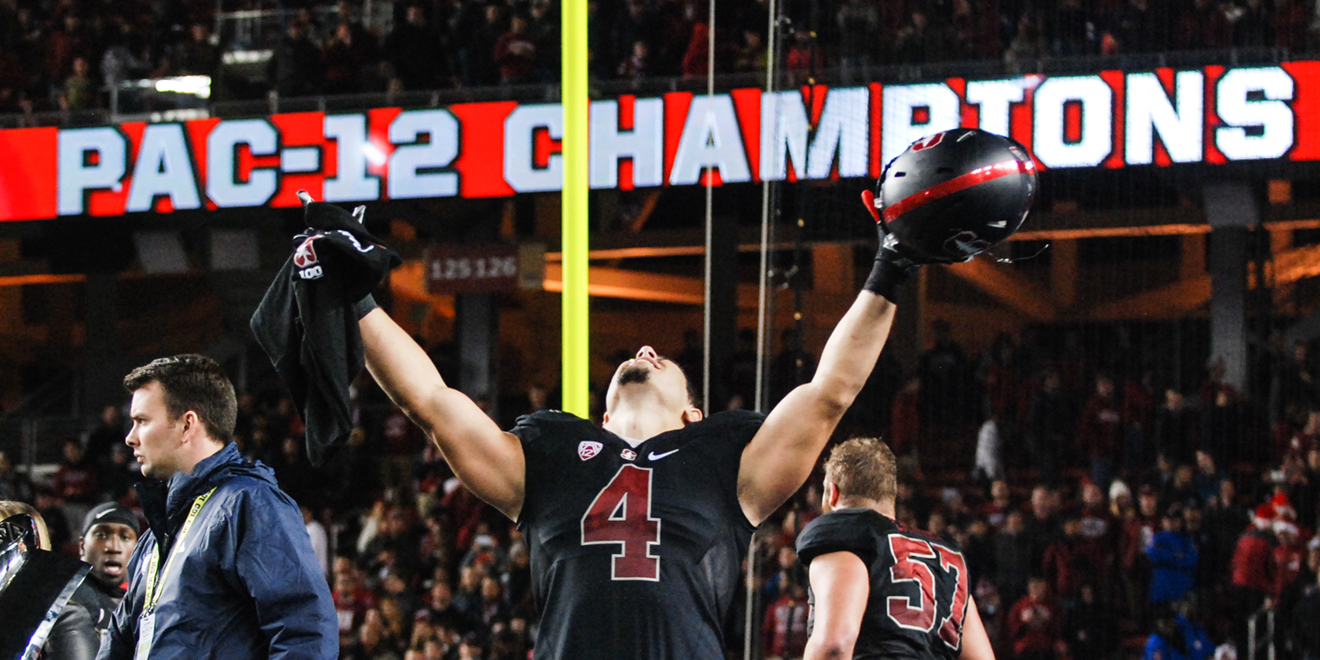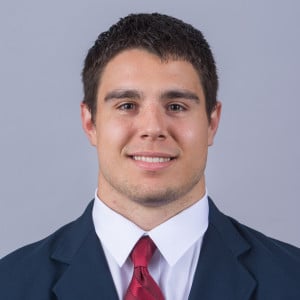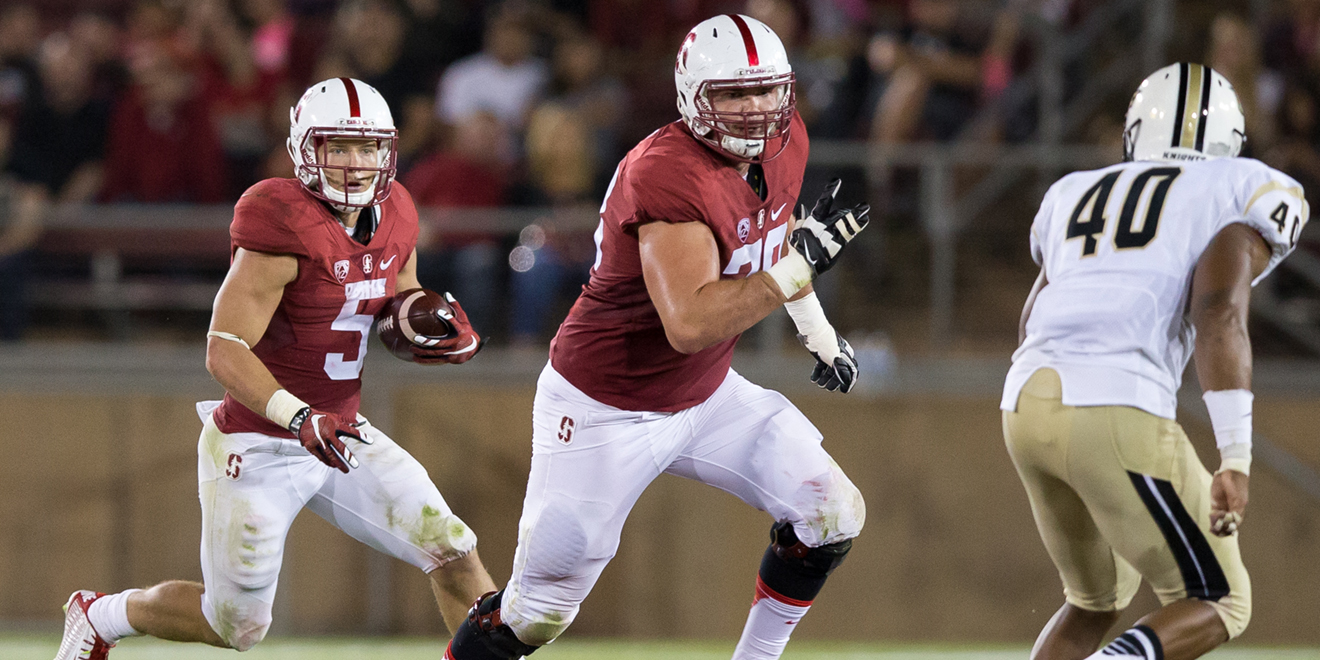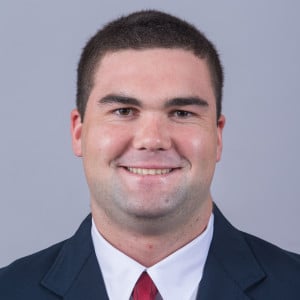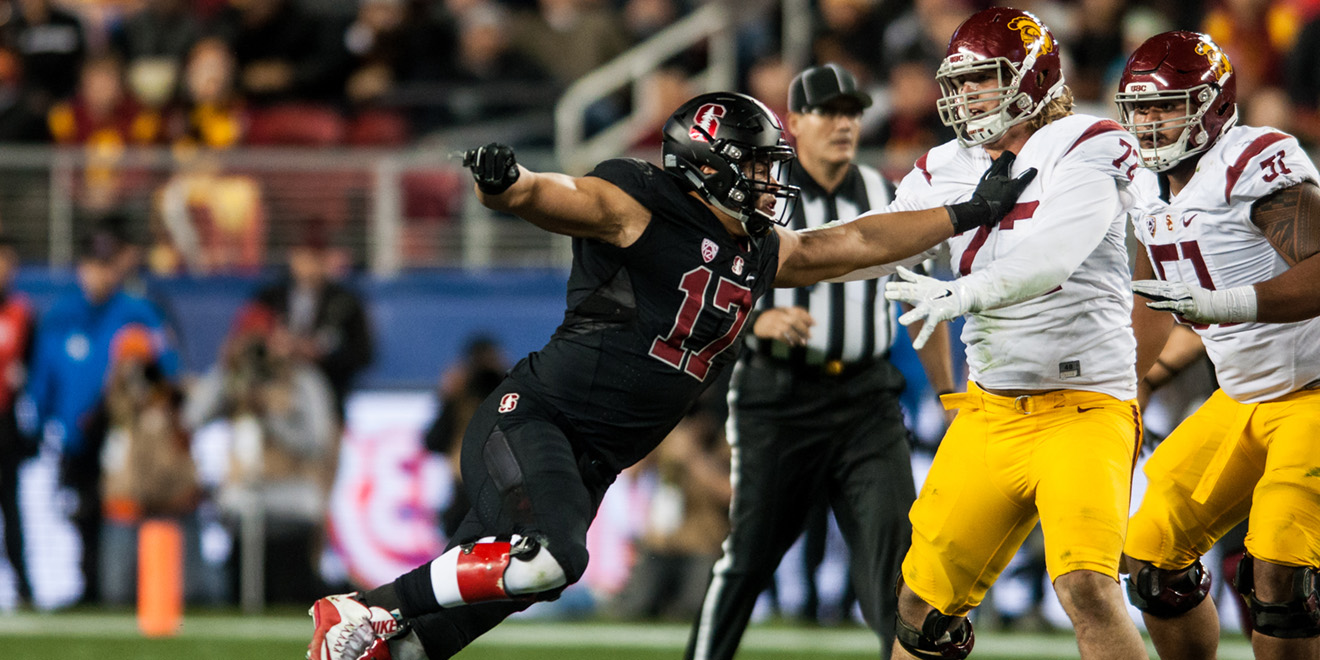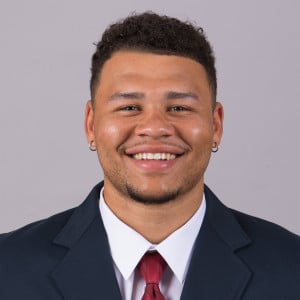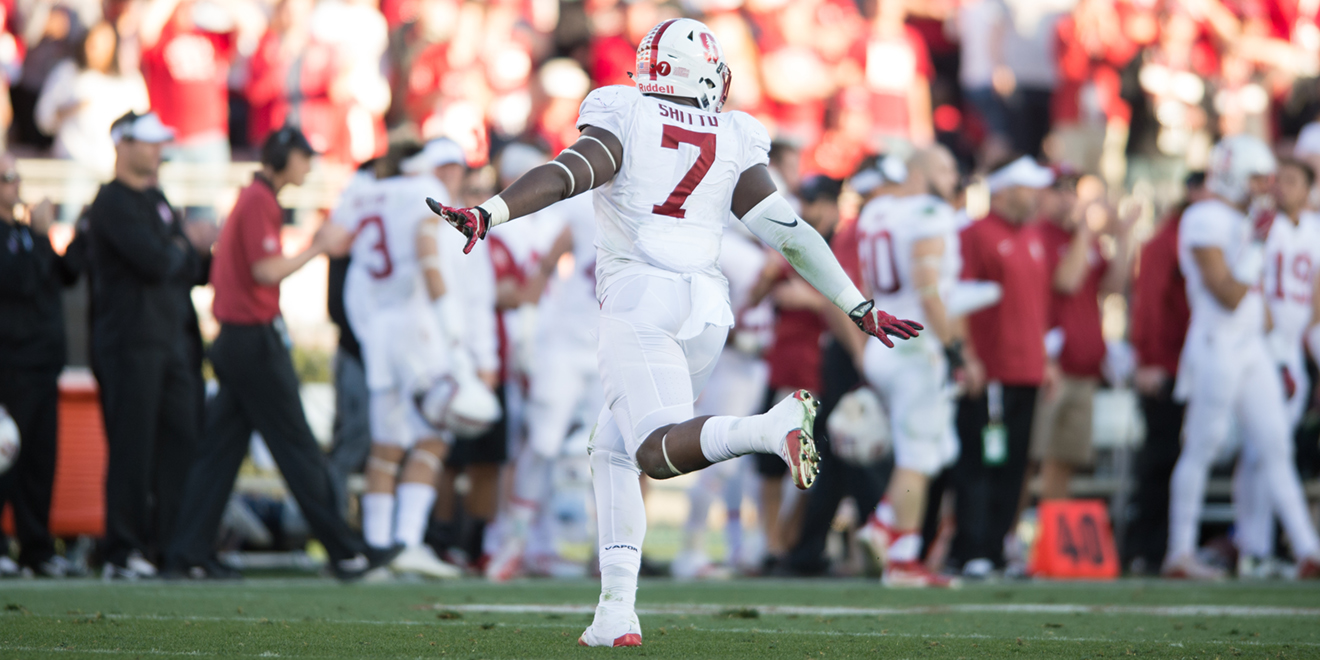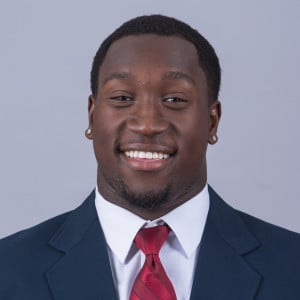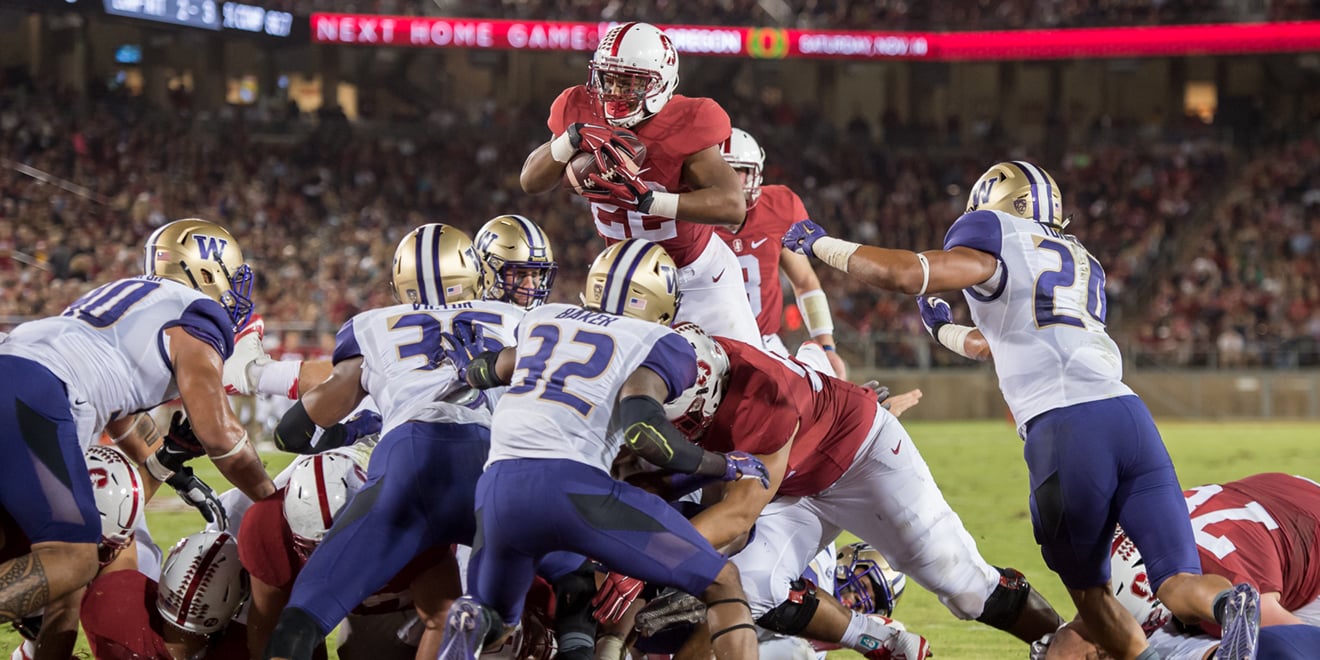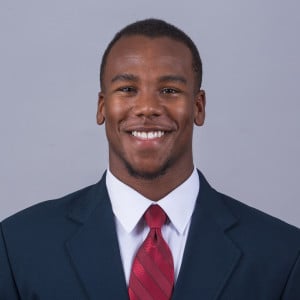(SAM GIRVIN/The Stanford Daily)
(SAM GIRVIN/The Stanford Daily)
Kevin Anderson, OLB
Projection: Undrafted
Cardinal career:
You could always count on the Palo Alto native showing up to the #PartyInTheBackfield in his Stanford career. Anderson first emerged as a key component of Stanford’s pass rush in the 2013-14 season, which he topped off with a pick-six in the 100th Rose Bowl. After a breakout senior campaign in which he tallied 32 tackles and 5.5 sacks, Anderson returned for a fifth year and added 21 more stops, despite missing a significant portion of the season due to injury.
Pro stock:
Anderson likely won’t hear his name called during Draft Weekend, but the outside linebacker appears to be a strong candidate to compete for a roster spot on special teams. At Stanford’s Pro Day, Mike Mayock of the NFL Network praised Anderson’s high motor and work ethic, traits which could strongly play into his favor when teams turn their eyes to undrafted free agents. After posting a strong 40 time at his Pro Day, Anderson will likely receive a look from a number of teams as a specialist on coverage units and as a backup linebacker.
(CASEY VALENTINE/isiphotos.com)
Devon Cajuste, WR
Projection: Round 5-6
Cardinal career:
Cajuste didn’t have the breakout 2015 that most people expected after becoming the Cardinal’s undisputed No. 1 wide receiver upon the departure of Ty Montgomery to the Green Bay Packers. In fact, Cajuste actually regressed in targets, catches, yards and touchdowns from 2014 to 2015 as Stanford moved back to its run-first offense, but Cajuste still came up big when the team needed him most, most notably capping off his home career with a critical catch against Notre Dame on a skinny post with time expiring to set up the game-winning field goal. He totaled 90 catches for 1,589 yards in his Stanford career and an average of 17.7 yards per catch, showing his sneaky big-play potential and downfield speed that the Cardinal took advantage of to stretch the field on many occasions.
Pro stock:
Coming out of high school, almost everyone wanted Cajuste to play tight end, and, in fact, he came to Stanford because the Cardinal were the only team that would let him play wide receiver. He’s having the same problem right now at the next transition, as most NFL teams see him as too slow to play wide receiver at the next level and too small to play tight end. Cajuste has proven doubters wrong before, and ran an unofficial 4.42 at his Pro Day following a disappointing 4.62 showing when he had a bad ankle at the NFL Combine. Cajuste has always been a crisp route-runner, and his size and physicality could make him a mismatch out wide against even the biggest cornerbacks in the NFL as a red-zone target, an area in which he excelled at Stanford. Don’t be surprised if he doesn’t get drafted, but if a team picks him up and knows how to use him, he could carve out a goal-line niche on Sundays as a hybrid WR/TE/H-back.
(DAVID BERNAL/stanfordphoto.com)
Josh Garnett, OG
Projection: Round 5-6
Actual: Round 1, No. 28 (San Francisco)
Cardinal career:
Garnett joins former standout linemen Andrus Peat and David DeCastro as Stanford’s last three first-round picks, dating back to 2012. The four-star recruit came to The Farm as part of Stanford’s best lineman class ever, including the likes of Peat, Kyle Murphy and Graham Shuler, among others. The son of former NFL nose tackle Scott Garnett enters the draft coming off an unbelievable senior season at Stanford, in which he garnered unanimous All-American honors blocking for AP Player of the Year Christian McCaffrey. Garnett also received the Morris Trophy (Pac-12’s best lineman) and the first Outland trophy (nation’s best lineman) in Stanford history during the 2015 season.
Pro stock:
Garnett’s combination of brute strength (30 bench press reps at the NFL Combine), offensive intelligence and aggression on the field make him a more than worthy pick for the 49ers. He knows how to play angles, drawing power from his lower body and smart hand placement to achieve a balance of finesse and power that is especially notable given his 6-foot-4, 312-pound stature. Garnett does have some limitations; scouts note that the 312-pound tackle runs into some pass protection issues and does not produce the footwork that would effectively compliment his muscle power. At the end of the day, however, Garnett is a unique combination of speed and power is enough to deem him one of the draft’s most explosive prospects.
(DON FERIA/isiphotos.com)
Ronnie Harris, CB
Projection: Undrafted
Cardinal career:
Known fondly as “Coach Harris,” the fifth-year senior anchored the Stanford secondary as the team’s No. 1 cornerback in 2015. Harris routinely matched up with some of the best wide receivers in the country this season, recording 37 tackles and 10 pass breakups to earn All-Pac-12 second team honors. The team captain is legendary for his leadership qualities, conducting the team’s “C-House” postgame chants and earning recognition from the coaching staff for his conduct on and off the field. Harris was sorely missed near the end of the season, when an injury against Oregon held him out of competition until the Pac-12 Championship.
Pro stock:
Harris is a quality zone corner and has a solid understanding of receiver and formation tendencies. The corner is a high-effort team player that does all the small things right; however, his size is a major weakness: Stanford generously lists him at five-foot-10, 172 pounds. Despite Harris’ many strong qualities, he simply doesn’t have the frame to play at the next level. Harris might get a chance to prove himself as an undrafted free agent, but don’t expect to hear his name on draft day.
(DAVID ELKINSON/stanfordphoto.com)
Kevin Hogan, QB
Projection: Round 5-6
Cardinal career:
With question marks surrounding the quarterback position after Andrew Luck’s departure in 2012, Hogan jumped into the starting role for Stanford midway through the season and never looked back. The fifth-year senior led Stanford to three conference titles and two Rose Bowl victories en route to a career record of 36-10, making him the winningest quarterback in Stanford history. Hogan saved his best for last, finishing his senior season top-10 nationally in completion percentage (67.8), passer efficiency (171.0) and yards per attempt (9.4).
Pro stock:
Coming out of a pro-style system with one of the most complex play books in the country, Hogan has already been lauded by scouts for his football instincts and IQ and is considered to be one of the most pro-ready quarterbacks in the draft. While he lacks speed, he has the agility in the open field to make people miss and pick up yards on broken plays. The Stanford captain is extremely accurate on short throws, but has consistently struggled to put zip on his deep ball, which will be a concern at the next level. Hogan’s biggest red flags are his poor pocket footwork and delivery, which make him a “what you see is what you get” type of prospect. Despite his limitations, Hogan has displayed toughness and leadership throughout his career that will have teams looking for a solid backup quarterback smacking their lips.
(SAM GIRVIN/The Stanford Daily)
Austin Hooper, TE
Projection: Round 3
Cardinal career:
After redshirting his freshman year, Hooper burst onto the scene as a sophomore and replenished the Stanford tight end well, which produced only nine total receptions in the previous season. His 74 receptions for 937 yards and eight touchdowns in college, while spending a lot of time blocking in a run-first offense, should pique a lot of teams’ interest. His signature performance came this past season with a career-high 79 yards on four catches on the road against USC to ignite the Stanford offense in a 41-31 victory.
Pro stock:
Tight End U has made quite a splash in the draft during the David Shaw era with two second-round selections in Coby Fleener and Zach Ertz as well as a fourth-rounder in Levine Toilolo. In addition to carrying on the Tree Amigos’ legacy on The Farm, Hooper looks poised to add to the Cardinal’s string of top tight end draftees. As big, physical pass-catching targets continue to take over modern NFL offenses, the 6-foot-4, 254 pound Hooper could stake his place in the league for years to come. Hooper won’t be on the board for long as teams in need of a tight end will almost certainly pounce sooner rather than later. Green Bay and Pittsburgh following the retirement of Heath Miller look to be strong possibilities.
(SAM GIRVIN/The Stanford Daily)
Blake Martinez, ILB
Projection: Round 5-6
Cardinal career:
Stanford has seen a few NFL-caliber inside linebackers come and go over the last few years (Skov, Tarpley), but Blake Martinez has asserted himself as one of the best to play the position in recent Stanford history. After an All-Pac-12 honorable mention showing in 2014 after finishing seventh in the Pac-12 with 102 tackles, Martinez asserted himself as the conference’s best run-stuffing linebacker in 2015 with a league-leading 141 tackles, garnering first-team All-Pac-12 honors and second-team All-America accolades. He leaves Stanford with 257 total tackles to his name, including 13.5 tackles for loss, five interceptions and four forced fumbles.
Pro stock:
Martinez is your prototypical NFL inside linebacker in size, strength and mobility. He’s gotten criticism from scouts for a lack of speed on the field, but that’s directly contradicted by his results at the combine, where he finished third among all linebackers in the 20-yard shuttle and second in the three-cone drill, which both emphasize lateral quickness. He’s quick to diagnose plays and make split-second decisions on the field, and while he lacks the ability to shed blocks at an elite level, he takes good routes to the ball and was deceptively good in coverage against some of the quicker running backs and receivers in the Pac-12. He’s probably going to drop lower than what he’s worth, but whoever ends up picking him up should be getting a pro-ready, cerebral player that has a good chance of making an NFL roster and becoming a solid contributor within a few years.
(BOB DREBIN/stanfordphoto.com)
Kyle Murphy, OT
Projection: Round 5-6
Cardinal career:
A five-star recruit out of high school in the famed 2012 recruiting class, Murphy contributed immediately as a freshman as an extra offensive lineman. In his third season, he became a starter at right tackle. However, he particularly shone in his senior season, paving the way for Christian McCaffrey’s 2,019-yard rushing season as one of the “Bash Bros” on the left side of the offensive line.
Pro stock:
As a two-year starter at both tackle positions, Murphy will certainly bring versatility and experience to the NFL team that decides to pick him. To become a starter at the NFL level, scouts believe Murphy needs to develop quicker feet and to play lower to the ground to give him more leverage in blocking situations.
(SAM GIRVIN/The Stanford Daily)
Brennan Scarlett, DE
Projection: 7-Undrafted
Cardinal career:
Stanford’s first-ever graduate transfer, from Cal no less, Scarlett played just one year on the Farm, but provided vital depth on the defensive line in 2015, especially after Stanford lost Harrison Phillips for the season in the opener to an ACL injury. For the 2016 Rose Bowl champions, Scarlett served as one of just three pure defensive linemen to see regular action. Scarlett led the team with 5.5 sacks and stood out over the final few games of the season, particularly against Oregon and Iowa.
Pro stock:
Though Scarlett was very limited in his collegiate career due to injury and didn’t post big numbers in his final season, he had a solid pro day and flashed good athleticism for a defensive end, running a 4.75 40-yard dash and posting 25 reps of 225-pound bench press.
(RAHIM ULLAH/The Stanford Daily)
Aziz Shittu, DE/DT
Projection: Undrafted
Cardinal career:
Shittu only totaled 34 games in an injury-plagued Stanford career, especially after suffering a season-ending ACL tear in 2014 to cut short what was supposed to be his breakout campaign after just five games. He did go out in style, capping off his senior season with a Rose Bowl Defensive MVP honor to finish the year with 57 tackles, 14.0 tackles for loss and 4.0 sacks to earn first-team All-Pac-12 honors. The always-smiling, boisterous Shittu finally found his niche playing both DT and DE in Stanford’s three-man front and could probably have done with another year at Stanford, had his redshirt not been burned late his freshman year.
Pro stock:
Shittu isn’t going to get drafted because of his injury history and lack of sample size, but it would be surprising if nobody took a chance on him as an undrafted free agent. Shittu doesn’t have the brute size, strength or block-shedding ability to be a playmaker at the next level, especially not in an NFL 3-4 defense, given how he never really found his true position at either 3-4 end or tackle. His technique, especially his hands, are below-average, and he’d probably end up playing limited time in a 4-3 line at best if he sticks with a team. If he improves his technique and bulks up, though, becoming a contributor at 4-3 end wouldn’t be out of the question.
(KAREN AMBROSE HICKEY/stanfordphoto.com)
Remound Wright, WR
Projection: Undrafted
Cardinal career:
Wright came to Stanford with a four-star rating and was Indiana’s No. 3 high school recruit. During his 2015 season, he was the go-to ball carrier when the Cardinal had less that two yards on third and fourth downs and was often called upon to pound the ball into the end zone. Although he averaged only 2.9 rushing yards per play, he still lead the team with 13 rushing touchdowns, with Christian McCaffrey coming in behind with eight, which shows how effective he was in his niche.
Pro stock:
Despite Wright’s success on The Farm, it is highly unlikely any NFL team will be interested in Wright not only because of his 5’9” frame, but also because of his lack of speed and countable stats. Other than tallying an impressive number of touchdowns this past season, the running back had comparably few carries and net yardage, as he only rushed for 239 yards on 82 carries. Additionally, with his lack of playing time, it’s also unclear if he is durable enough to handle the NFL.
Contact Do-Hyoung Park at dpark027 ‘at’ stanford.edu.
